Go Camping For FREE In The US & Canada – Full Guide & 6 Resources
Today we have a comprehensive guide on how you can go camping for free in the US and Canada. You might want to bookmark this page to refer to in the future.
Whether you’re an experienced camper or looking for a beginner’s guide on how to camp, there are options out there for everyone.
As a camper, you might call it by different names, from boondocking, dry camping, remote camping, or dispersed camping.
Whatever you like to call it, the ultimate goal will always be the same: camp in the great outdoors without having to pay fees.
If you spend the typical $20 or $30 per night to pitch a tent at maintained, well-established campgrounds, you’ll quickly find yourself with a growing list of fees.
You won’t have to worry about fees with your camping hobby if you can go for free! They do exist!
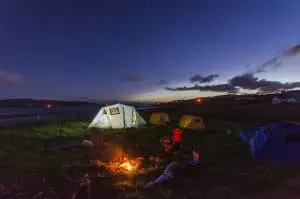
There are plenty of free or inexpensive camping destinations out there. It’s all a matter of knowing where to go.
If you spend a lot of time camping, arguably the frustrating thing you need to deal with is paying for campsites. Camping is supposed to be one of the least expensive hobbies you can enjoy for a great adventure, but these fees can start to add up.
Here are the best places to go if you are hoping to camp or sleep for free. As well, how to find your own destinations.
How To Go Camping For FREE In The US & Canada
[toc]
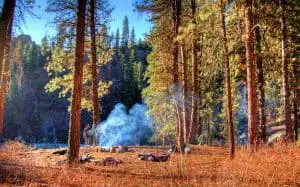
National Grasslands and Forests
In the United States, you are generally allowed to camp without paying in any area that is a designated National Forest or Grassland. Unless otherwise marked, you don’t need to worry about paying to stay at one of these gorgeous locations.
Keep in mind that each forest will have slightly different policies and regulations, so it’s worth it to do some research in advance. That being said, these destinations provide a great alternative to paying to camp at an established campground.
Best For
Camping in tents, RVs, trailers, and vans
The Experience
You have plenty of choices when it comes to camping for free in the US in a National Forest. If you want to tent camp, you can backpack deep into the forest to pitch your tent. Alternatively, you can pull over and camp on the side of a road.
Remember that, as with many of these alternative camping destinations, you will need to be more self-reliant – you won’t have any public amenities. From trash removal to tables to restrooms, everything will be left up to you.
In some national forests, campfires are permitted as long as you apply for and receive a fire permit (and given that there are no current fire bans). These fire laws and regulations change often, so it’s worth checking ahead of time as well as when you get there.
Since there are so few amenities, you should also mind the principles of the Leave No Trace philosophy while you are out in the wilderness. Leave the area pristine!
Getting There
National forests and grasslands are usually clearly indicated on Google Maps. However, you can also search by state or use a National Forest Map Locator to find specific camping areas. These search options will also give you more information about any potential regulations in the area in which you are hoping to camp.
National Geographic also has detailed maps for some national forests. It’s worth picking up a copy while you’re planning your trip – remember, you won’t always have cell phone reception when you’re trying to locate and set up your campsite!
Other Important Details
All campsites must be formed outside of designated campgrounds, and there’s usually a fourteen-day limit. There are no amenities, and you’ll want to set up your camp about 200 feet from a stream or another source of water.
While the information detailed above does not necessarily apply to national parks, know that many national parks are surrounded by these national forests as well.
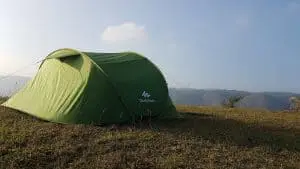
Bureau of Land Management (BLM) Property
BLM properties are governmentally managed lands that are located in western portions of the United States. These generally allow free camping, but BLM manages a wide variety of industries and activities, so you need to be careful.
In addition to wild areas, BLM is also in charge of mining operations and cattle grazing – so just because you see BLM land doesn’t mean it’s going to be suitable (or safe) for camping.
Best For
Camping in tents, trailers, vans, and recreational vehicles (RVs)
The Experience
There are lands managed by the BLM throughout the west. However, most of it is located in desert regions. You can backpack, stay at pullover spots, or find secluded areas along access roads, but there are also some semi-developed unmarked camping spots.
Regardless, these will not have public amenities like restrooms or trash. You may be able to have a fire, but you will likely be required to apply for a fire permit and ensure that there are no active fire restrictions.
Getting There
BLM lands often cannot be found on Google Maps, so they are much harder to locate by a novice explorer.
The BLM.gov website had an interactive map but replaced it in 2017 with a more difficult-to-use map. It can still be a valuable resource as you are planning your trip, but it might take more work to figure out.
To start, pull up the Search option, and then type in the state you are looking at followed by the words “Surface Agency Map.” The result will have a + underneath it, which you can click to view as a layer in the map setting.
Next, you should move to the Maps feature (located in the upper navigation panel). You can add the layer to the interactive map so that you can see BLM for that region.
If you can’t get the BLM map to work, you can also use the BLM Google Earth Overlay by Our Wandering Rhythm. You can download this overlay as a file and then upload it in a layer format onto Google Earth.
Other Important Details
As with national forests, all camping areas must be set up outside of established campgrounds. There is usually at least a fourteen-day limit, and there will be no amenities. You should set your camp up at least two hundred feet from streams or bodies of water.
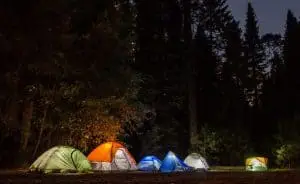
Canada Crown Land
If you live in Canada or are planning a trip to the “great white north,” there are plenty of free camping resources available there, too.
Nearly ninety percent of Canada is known as Canadian Crown Land, and it’s available to residents of Canada for public access.
If you are not a resident of Canada, you can apply to receive a permit, the price of which varies depending on the province.
You can camp on Canadian Crown Land for up to three weeks at a time, but keep in mind that there are some regions in which camping is not permitted.
Canadian Crown Land is divided into multiple subcategories that are managed on the provincial and federal levels, and each has various restrictions that can make it somewhat of a challenge to navigate.
However, if you’re planning on camping in Canada, the vast availability and reach of Canadian Crown Land proves it to be a good resource to consider.
Best For
Backpacking or camping in trailers, vans, tents, or RVs
The Experience
Since there is so much Canadian Crown Land out there. Therefore, your individual experience will be unique depending on where exactly you are located.
In some specific provinces, you will be able to camp on primitive campgrounds known as Recreation Sites. They function just as old-fashioned campgrounds do but have fewer amenities (or no amenities at all).
Most Canadian Crown Land, though, is located in more remote areas of the country. Infrastructure will be limited, and accessing the land can be a challenge.
As a result, many Canadians paddle in via canoe or kayak to get to these spots. This is popular in many eastern provinces such as Ontario.
Getting There
Locating Canadian Crown Land for camping can be a bit of a challenge as camping regulations will vary between provinces. While some provinces maintain detailed interactive maps on the Internet, others only have static .pdf maps.
Some provinces don’t have any information available to the public at all! If you read to the bottom of this article, we will give you more information on how to find suitable public lands for camping in Canada.
Other Important Details
If you are a Canadian resident, you may camp for free for 21 days. As a non-resident, you will need to apply for a permit (the application details and prices vary depending on the province). Some established sites can be accessed by vehicle, but the majority of Canadian Crown Land camping will require you to backcountry camp.

WalMart
Hear us out. If you are an experienced backwoods camper, WalMart might not be the first place you consider when you are looking for premier camping spots. However, it is an untapped resource if you are looking for a place to stay.
It’s probably not the best choice if you want to tent camp, but if you are camping in an RV, van, trailer, or other kind of self-contained vehicle, you might get some mileage out of the WalMart parking lot.
Whether you want to try your hand at the ultimate travel experience or are just looking for a place to crash for one night, Wally World is a great choice.
Best For
Camping in vans, RVs, and trailers
The Experience

Now, let’s be clear on this one: camping in the WalMart parking lot isn’t exactly camping. It’s just staying in your vehicle at night.
You won’t want to hang out here for long periods of time, but instead just arrive late at night and depart early in the morning.
If you’re camping at WalMart, you should avoid staying in the inner areas in the parking lot (those close to the store). This can disrupt store business like truck deliveries and customer parking, and it can get you in some hot water.
WalMart allows travelers to stay in the parking lot for the most part – while some stores prohibit camping, most allow the practice as a generous privilege.
You must, however, keep all camping activities contained within your vehicle. This includes grilling, relaxing, and sleeping.
Getting There
As we mentioned, not all WalMart stores will allow you to camp overnight. Those located in major metropolitan areas may have managers who prohibit the practice, or local laws may interfere with your plans.
Make sure you check out the WalMart No Stay List before you make plans to stay here.
At the very least, call the store and ask the manager if you aren’t sure.
Other Important Details
You must keep all camping activities inside your vehicle, and best practices are to arrive late and leave early in the morning.
Park far away from the main entrance to the store, and remember that you can always use the bathrooms when the store is open.
Another bonus? If you forgot to pack anything, WalMart probably stocks it.

Other Options
WalMart is pretty much the top choice for stealth camping, as we like to call it, but it’s far from being the only resource for camping overnight.
Casinos
Most casinos allow vans, RVs, and trailers to park overnight. Again, this camping situation will be similar to WalMart.
You will want to keep all activities within the vehicle, and you’ll need to maintain a low profile. Use the map locator on CasinoCamper.com to find out which casinos permit overnight parking.
Truck Stops
Travel on any freeway, and you’ll probably find a truck stop. These generally cater to long haul truckers, but if you’re traveling in a trailer, van, or RV, you’ll likely find that they have plenty of resources for you, too.
These offer food, fuel, and other travel resources, and most allow overnight parking. Some major chains to consider include Travel Centers of America and Flying J.
Rest Stops
Designated rest stops can be found along most US interstates. These are specifically designed to give drivers a spot to pull over and take a rest. Some rest stops do not allow overnight parking, so you may need to do some digging.
Regulations will likely vary based on state, city, and country. Take a look at this thorough list by Interest Rest Areas for a comprehensive overview of where you can stop in each locale.
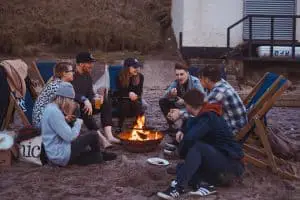
Resources for Camping for Free in the US
Consider these resources as you make your list of potential places to go camping for free in the US.
National Digital Resources
Forestcamping.com – This website is a treasure trove for finding national forest campgrounds. Most of these are paid campsites, but they are generally less expensive than those in National Parks.
Ultimatecampgrounds.com -This is a great resource that details all the public campgrounds in Canada and the United States. They aren’t all free, but the website will tell you if the campsites have any fees and if they do, what they are. There are also apps available for Android and iOS.
Nationalmap.gov – Here, you can find state maps of federal land both in a printed PDF format and a digital version. You can save these to your smartphone to be viewed later. They have lots of detail of US lands.
Freecampsites.net – This website lets you find directions and GPS coordinates for free campgrounds. It also includes reviews and can be used on a desktop or mobile app.
Campendium.com– This camping resource has a feature that allows you to find free camping destinations by state. You can view pictures, read reviews, and even see if the campground has cell phone service.
Publiclands.org – This website includes an interactive map that enables you to search for public lands in the western portions of the United States. All campsites are listed are paid, but you can view free National Forest and BLM lands, too.
Canadian Crown Land
We have included resources for finding good Canadian Crown Land camping destinations in each Canadian province below.
Alberta – Alberta Environment and Parks – Canadian Crown Land PDF Maps
British Columbia – Recreational Sites and Trail Interactive Map
New Brunswick – Canadian Crown Land Conservation Map
Nova Scotia – Nova Scotia Data Portal – Canadian Crown Land Interactive Map
Ontario – Land Information Ontario Map Locator
Saskatchewan – Campgrounds and Recreation Sites – Google Map
Guidebooks and Printed Materials
You can find most information for free online, which is always easier as you are likely to have your mobile phone on you at all times.
However, if you are headed into the backwoods, cell phone service will of course be unreliable.
Therefore, it’s always a good idea to have a paper map or other printed resources on hand, too.
Paper Maps that will guide you to go camping for free in the US
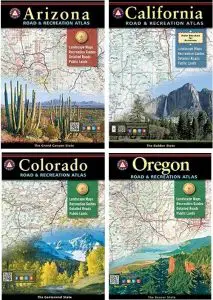 |
Benchmark Road Map and Recreation Atlas – These atlases offer maps of each state.
They include BLM land, National Forests, and other land agencies, and also include information about trailheads, drivable roads, campgrounds, topography, and more. Check price: Amazon |
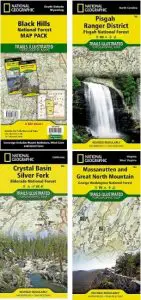 |
National Geographic National Forest Maps – These maps offer plenty of detail about ranger districts and forests.
They are expensive if you want to buy all of them, but you can purchase the ones for the specific areas in which you are going to be camping. They include information such as trails, water, dump stations, and more. Check price: Amazon |
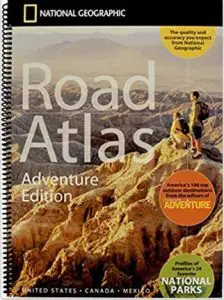 |
National Geographic Road Atlas – Another good atlas to consider is this one made by National geographic.
It will give you information about all of North America with less detail as state by state. It has a special focus on outdoor activities, though, and provides a detailed overview of the country’s wild areas. Check price: Amazon |
 |
Backroad Mapbooks – If you’re headed to Canada, these regional maps are the ones to take with you.
They include plenty of information on finding Canadian Crown Land as well as on specific features like hiking trails, hot springs, lakes, and backcountry roads. Check price: Amazon |
Related Posts:
69+ BEST Family Camping Tips and Tricks for Beginners
Best 4 Generators for Camping Review
10 Tips Camping with Kids to Save Your Sanity!
Camping in the Winter: Do’s and Don’ts

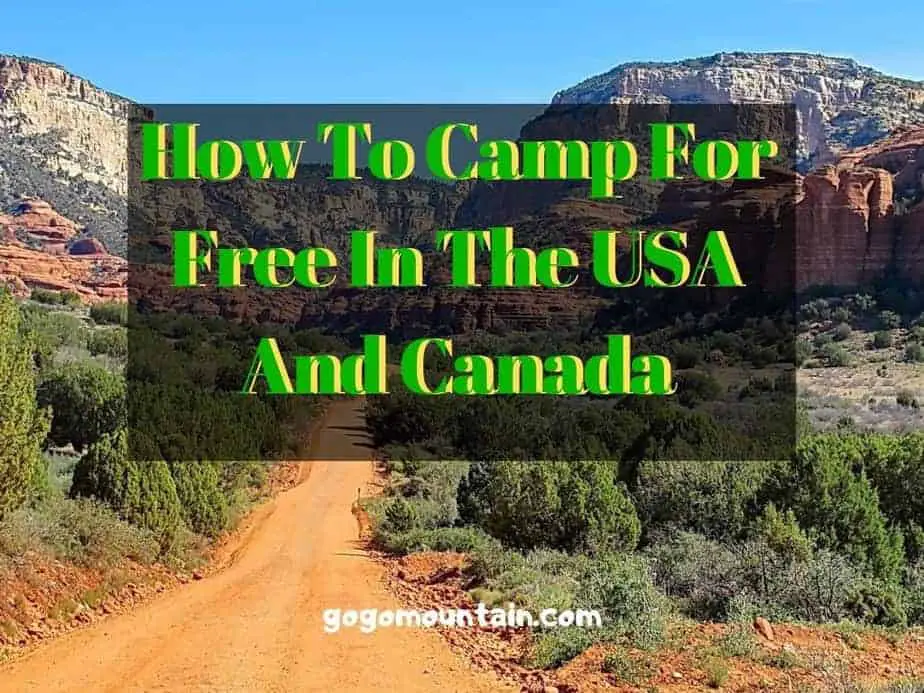
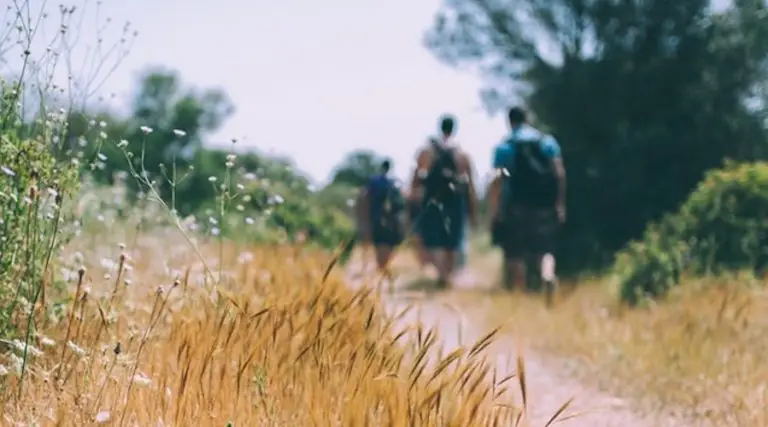
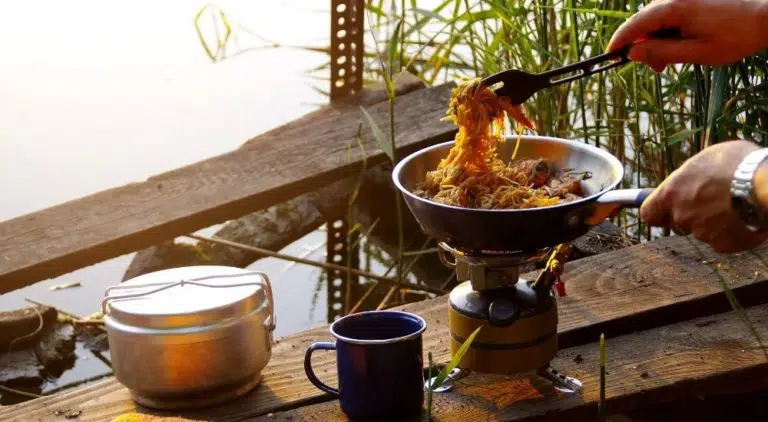



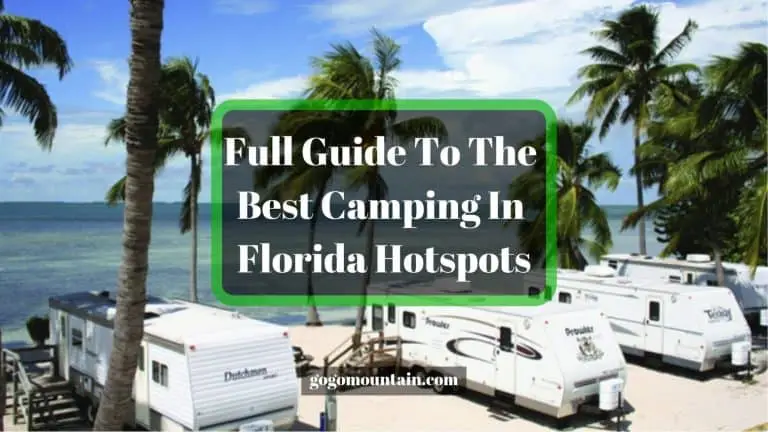
As new RV owners, we are always looking for places to stay for the night on our travels. This list helps a lot and has opened up new opportunities for us. I never thought of staying at Walmart!
Great article!